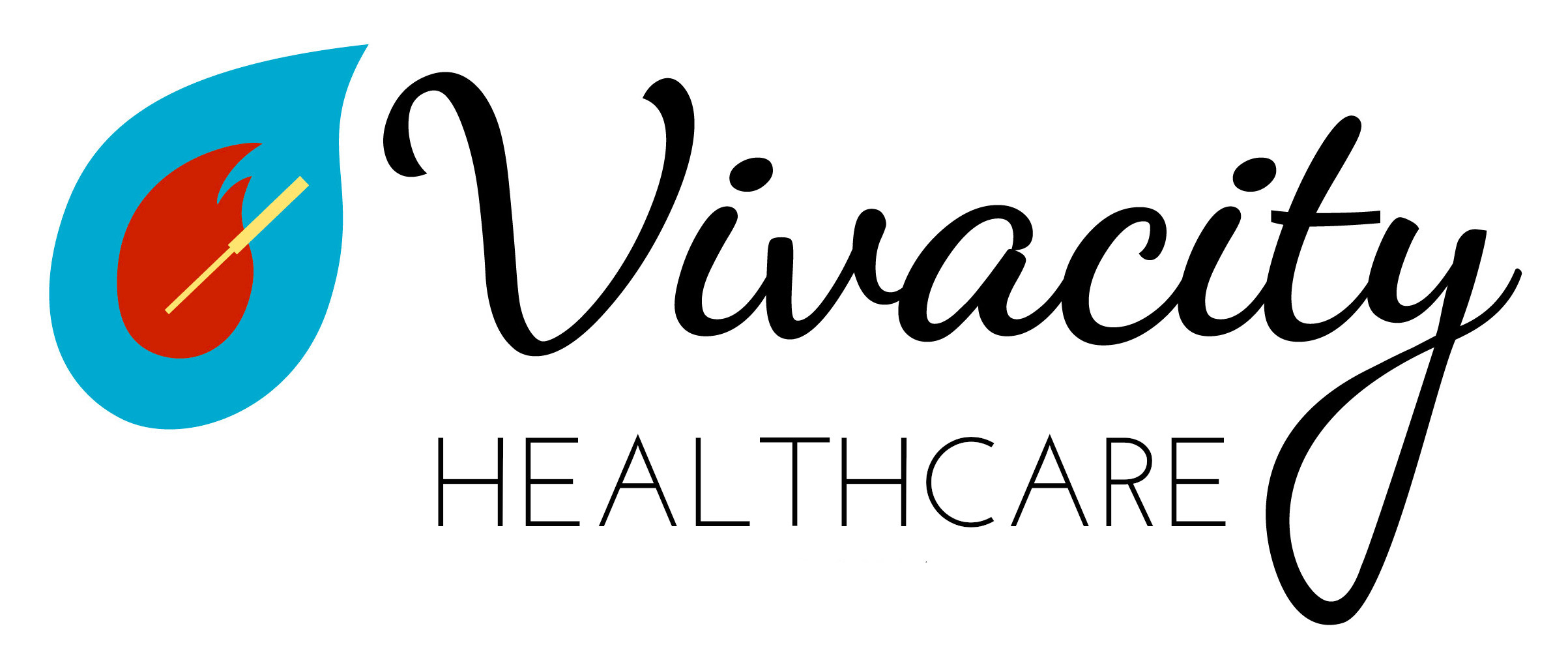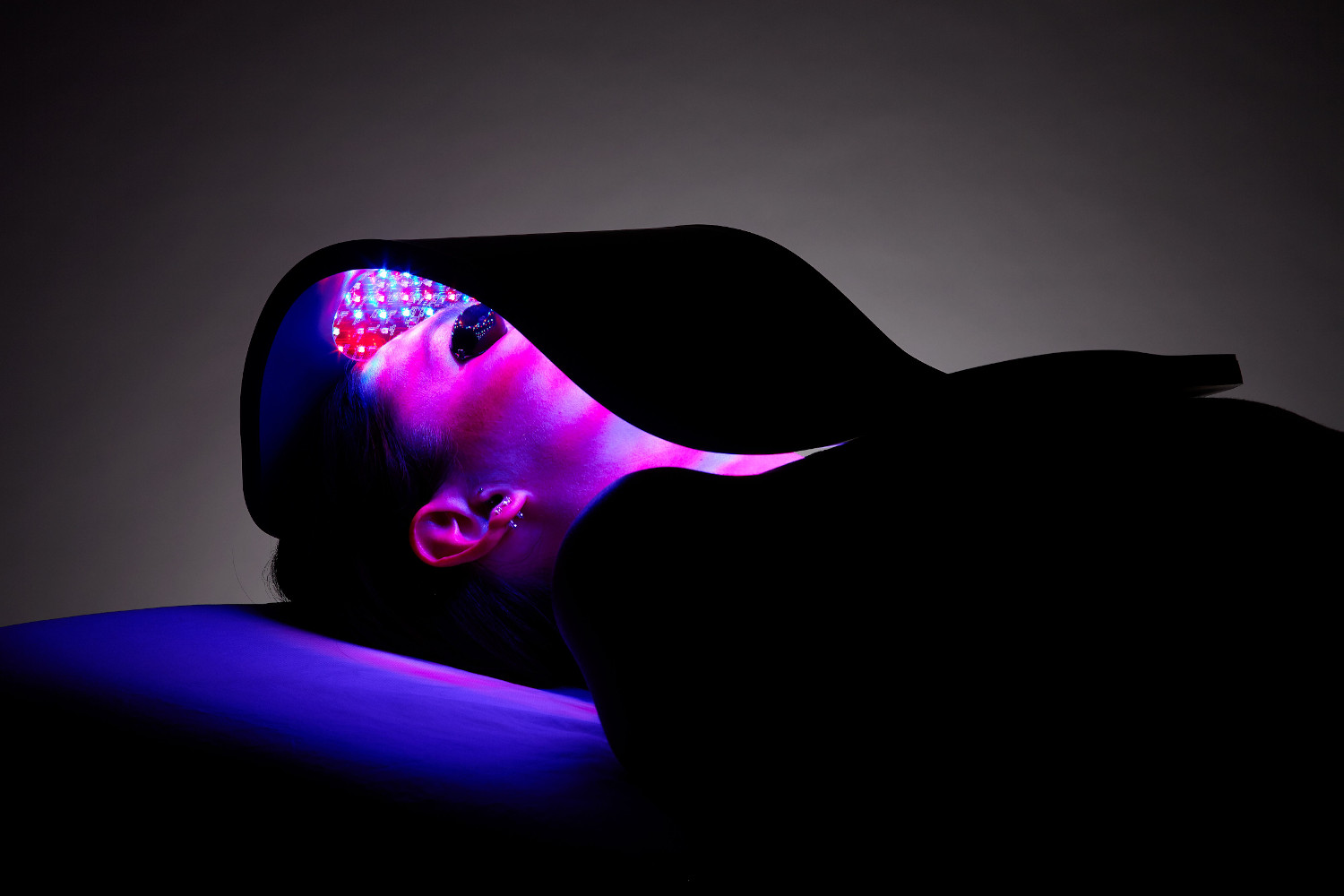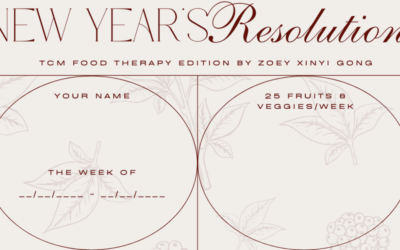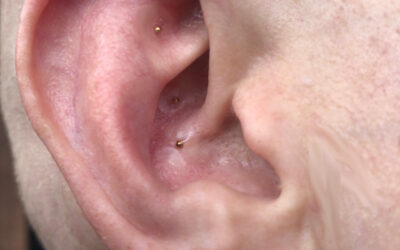Remember the sunscreen when you are out and about this summer! Here’s why:
Both age and environmental factors beyond our control are responsible for skin health– yet damage from UV rays seems to be one of the most important influences. Luckily, research shows that low level laser therapy (LLLT) available during Vivacity Acupuncture treatments is an antidote to harmful solar radiation.
The first reports of LLLT effects on skin rejuvenation go back to 1987 [1], and numerous studies over the last 3 decades have provided more information about how best to use this treatment. Longer wavelengths travel deeper into the body– so a combination of red and blue light is often used to treat acne by affecting both the sebaceous glands and the dermis [2]. I often use red light in conjunction with my microneedling treatments as it can increase collagen production by 200% to treat lines and laxity. The skin benefits are far beyond purely cosmetic in that it mitigates pigmentary disorders, wounds including cold sores, scars as well as inflammatory diseases such as psoriasis and acne [2] and even androgenic hair loss. Interestingly one of these studies found that the enhancement of cell-to-cell communication between dermal components, especially the fibroblasts, and other cellular responses to LED treatment produce new collagen in a larger area beyond the directly-treated regions [3].
You don’t have to wait until you see signs of sun damage to reap the benefits of this treatment. In the natural environment, visible and infrared solar wavelengths predominate in the morning while UV rays, that lead to collagen breakdown and the formation of free radicals while inhibiting cellular repair, do so around noon. Research revealed that exposure to the infrared spectrum found in early morning rays yields a natural protective mechanism from the more harmful rays in the afternoon [4] and this cellular defense against solar UV cytotoxicity is long-lasting and cumulative [5]. In other words, LLLT can reduce UV damage both as a treatment and as a preventative!
While these skin health benefits speak volumes about LLLT, it has also been proven effective for acute and chronic muscle and joint pain of the neck, back and shoulder while increasing range of motion [6], hand and wrist pain associated with carpal tunnel syndrome, and osteoarthritis symptoms [7]. For example, favorable systemic reviews in prestigious peer-review journals such as a 2009 review in The Lancet concluded that, among people with chronic neck pain, “LLLT reduces pain immediately after treatment…and up to 22 weeks after completion of treatment” [8]. The benefits of infrared therapy for pain are well known, but in the summer months I often switch to LLLT, also called ‘cold laser,’ because there is no heat emitted during treatment.
In sum, LLLT is FDA approved for aging and hair loss reversal, acne, wound healing and even pain relief, and the FDA classifies it as bearing no side effects. Because the therapy will not penetrate sunscreen, refrain from applying it before coming into the office for your session. In addition to the face, many people treat the skin on their chest, hands or other areas that are regularly exposed to the sun as well as parts of the body in pain.
References:
[1] Abergel RP, Lyons RF, Castel JC, Dwyer RM, Uitto J. Biostimulation of wound healing by lasers: experimental approaches in animal models and in fibroblast cultures. J Dermatol Surg Oncol. 1987 Feb;13(2):127–133. [PubMed]
[2] Avci P, Gupta A, Sadasivam M, Vecchio D, Pam Z, Pam N, Hamblin MR. Low-level laser (light) therapy (LLLT) in skin: stimulating, healing, restoring. Semin Cutan Med Surg. 2013 Mar;32(1):41-52. PMID: 24049929; PMCID: PMC4126803. [PubMed]
[3] Lee SY, Park KH, Choi JW, et al. A prospective, randomized, placebo-controlled, double-blinded, and split-face clinical study on LED phototherapy for skin rejuvenation: clinical, profilometric, histologic, ultrastructural, and biochemical evaluations and comparison of three different treatment settings. J Photochem Photobiol B. 2007 Jul 27;88(1):51–67. [PubMed]
[4] Barolet D, Boucher A. LED photoprevention: reduced MED response following multiple LED exposures. Lasers Surg Med. 2008 Feb;40(2):106–112. [PubMed]
[5] Menezes S, Coulomb B, Lebreton C, Dubertret L. Non-coherent near infrared radiation protects normal human dermal fibroblasts from solar ultraviolet toxicity. J Invest Dermatol. 1998 Oct;111(4):629–633. [PubMed]
[6] Stergioulas A. Low-power laser treatment in patients with frozen shoulder: preliminary results. Photomed Laser Surg. 2008; 26: 99-105. [PubMed]
[7] Gur A, et al. Efficacy of different therapy regimes of low-power laser in painful osteoarthritis of the knee: A double-blind and randomized-controlled trial. Lasers Surg Med. 2003; 33: 330-338. [PubMed]
[8] Chow, RT, et al. Efficacy of low-level laser therapy in the management of neck pain: a systematic review and meta-analysis of randomised placebo or active-treatment controlled trials.The Lancet. 2009 Dec 5;374(9705):1897-1908. [Full Text]




